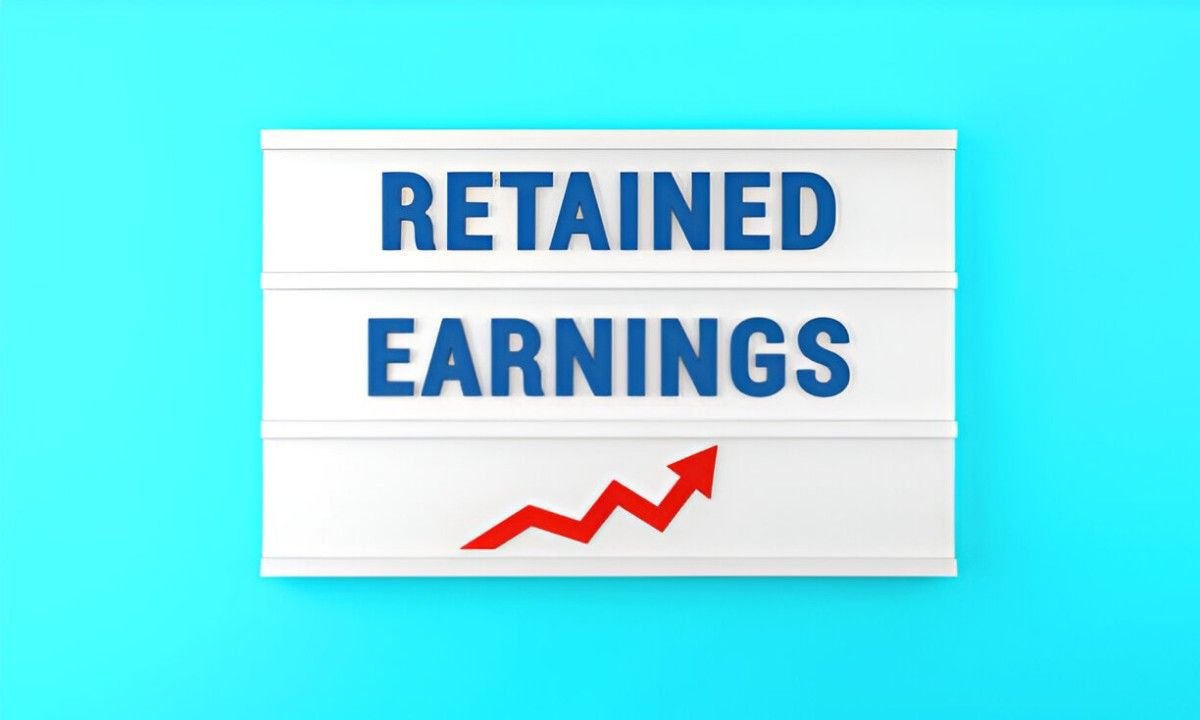Retained earnings is a vital concept in corporate finance and accounting that impacts a company’s growth, financial stability, and overall profitability. As a beginner, understanding this topic is crucial if you want to make informed decisions about the financial health of a business, whether you’re an investor, business owner, or just someone interested in how companies manage their funds. In this guide, I will walk you through the concept of retained earnings, its importance, and how it affects your business operations and financial statements. Along the way, I’ll include examples, calculations, and tables for better understanding.
Table of Contents
What are Retained Earnings?
Retained earnings are the portion of a company’s net income that is kept within the company rather than being distributed to shareholders as dividends. These earnings are typically used for reinvestment into the business, such as funding capital projects, paying down debt, or supporting operational growth. Retained earnings are reported on the balance sheet, often under the equity section, and reflect the accumulated profits (or losses) of a company over time.
The Formula for Retained Earnings
The formula for calculating retained earnings is straightforward:
Retained\ Earnings = Beginning\ Retained\ Earnings + Net\ Income - DividendsWhere:
- Beginning Retained Earnings is the retained earnings from the previous period.
- Net Income is the company’s profit after all expenses, taxes, and interest have been deducted.
- Dividends are the profits distributed to shareholders.
This formula highlights how retained earnings accumulate over time, with the company either increasing or decreasing its reserves based on its performance and dividend policies.
The Importance of Retained Earnings
Retained earnings serve as a financial cushion for a company. They provide the company with the necessary funds to reinvest in growth and expansion without relying heavily on external financing, such as loans or equity financing. Let’s explore why retaining earnings is crucial for a company’s long-term sustainability:
- Funding Growth: Retained earnings provide the capital necessary to fund new projects, research and development, or expansion into new markets.
- Paying Down Debt: Companies often use retained earnings to reduce outstanding debt, thus improving their financial health and reducing interest expenses.
- Weathering Economic Downturns: During tough economic times, companies can use retained earnings to maintain operations, pay salaries, and keep business running without resorting to layoffs or cutting essential services.
- Avoiding Dilution: By relying on retained earnings for funding, companies avoid issuing new shares, which would dilute existing shareholders’ equity.
How Retained Earnings Appear on Financial Statements
Retained earnings appear in the equity section of the balance sheet. This is because they represent the portion of the company’s equity that has been reinvested in the business rather than paid out to shareholders. Let’s take a look at a sample balance sheet to see how retained earnings are presented.
Example Balance Sheet:
| Assets | Amount | Liabilities & Equity | Amount |
|---|---|---|---|
| Current Assets | $500,000 | Current Liabilities | $150,000 |
| Non-Current Assets | $1,000,000 | Long-Term Liabilities | $300,000 |
| Total Assets | $1,500,000 | Equity | |
| Common Stock | $400,000 | ||
| Retained Earnings | $650,000 | ||
| Total Liabilities & Equity | $1,500,000 |
In this example, you can see that the retained earnings amount is $650,000, which is part of the company’s equity section.
How Retained Earnings Affect Financial Ratios
Retained earnings play a key role in several financial ratios that investors and analysts use to assess a company’s financial health. Some important ratios include:
- Return on Equity (ROE): ROE measures the profitability of a company relative to shareholders’ equity, and retained earnings contribute to this equity. The formula for ROE is:
Retention Ratio:
The retention ratio shows the percentage of net income retained in the company, as opposed to being paid out as dividends. It is calculated as:
Retention\ Ratio = \frac{Retained\ Earnings}{Net\ Income}A high retention ratio means that the company is reinvesting most of its profits back into the business rather than distributing them to shareholders.
Earnings Per Share (EPS):
EPS represents the portion of a company’s profit allocated to each outstanding share of common stock. The formula for EPS is:
EPS = \frac{Net\ Income - Preferred\ Dividends}{Weighted\ Average\ Shares\ Outstanding}Retained earnings indirectly impact EPS because the decision to retain or distribute earnings influences the overall financial performance of the company.
Retained Earnings and Dividends: A Delicate Balance
While retained earnings are a valuable source of capital for growth, companies must strike a balance between retaining earnings and paying dividends to shareholders. A company that retains too much profit may alienate its investors, who expect regular dividend payouts. On the other hand, paying out too much can limit the company’s ability to reinvest and grow.
Let’s look at an example to see this balance in action.
Example:
Imagine a company has the following financial information:
- Beginning retained earnings: $500,000
- Net income for the year: $200,000
- Dividends paid: $50,000
Using the formula, the retained earnings for the year would be:
Retained\ Earnings = 500,000 + 200,000 - 50,000 = 650,000This means that the company has successfully added $150,000 to its retained earnings, which can now be used for future investments.
Example: Impact of Retained Earnings on Financial Reserves
Let’s consider a small business that generates a net income of $100,000 for the year. The company has a policy of reinvesting 60% of its profits back into the business and paying out 40% as dividends.
- Net Income: $100,000
- Retention Ratio: 60% (reinvested into the business)
- Dividends: 40% (paid to shareholders)
Calculation:
- Amount reinvested: $100,000 * 60% = $60,000
- Amount paid as dividends: $100,000 * 40% = $40,000
If the company’s beginning retained earnings were $50,000, the ending retained earnings for the year would be:
Retained\ Earnings = 50,000 + 60,000 = 110,000This illustrates how a portion of the company’s earnings is retained for future growth, which can be used for new investments or paying down debt.
Retained Earnings and Business Strategy
How a company manages its retained earnings often reflects its business strategy. Here are a few strategic considerations for managing retained earnings:
- Growth-Oriented Companies: These companies typically have high retention ratios, reinvesting a significant portion of their profits into expansion, innovation, and acquisition. This strategy helps them build a competitive edge and increase market share.
- Mature Companies: Mature businesses with steady cash flow may focus more on distributing dividends. They often have lower retention ratios since their growth opportunities may be limited, and they prefer to share profits with shareholders.
- Crisis Management: In times of economic difficulty or a downturn, businesses may use retained earnings as a financial buffer to maintain operations without needing external financing.
Retained Earnings in the US Economic Context
In the US, retained earnings are particularly significant for businesses looking to navigate economic cycles. The ability to maintain a strong reserve can help companies weather recessions or periods of financial instability without sacrificing growth. Additionally, with the US corporate tax environment, companies may also consider tax implications when deciding how much to retain versus distribute as dividends. For example, the Tax Cuts and Jobs Act of 2017 lowered corporate tax rates, giving businesses more flexibility to keep earnings within the company for reinvestment.
Conclusion
Mastering retained earnings is essential for anyone involved in business finance, whether you’re an investor, a business owner, or someone looking to understand corporate finances. These earnings provide the financial reserves needed for growth, stability, and long-term success. By understanding how retained earnings work, how they affect financial statements, and how they influence key financial ratios, you can make better decisions for the future of your business or investments. Just as importantly, knowing how to manage retained earnings wisely ensures that a company can balance the needs of reinvestment and shareholder satisfaction effectively.





